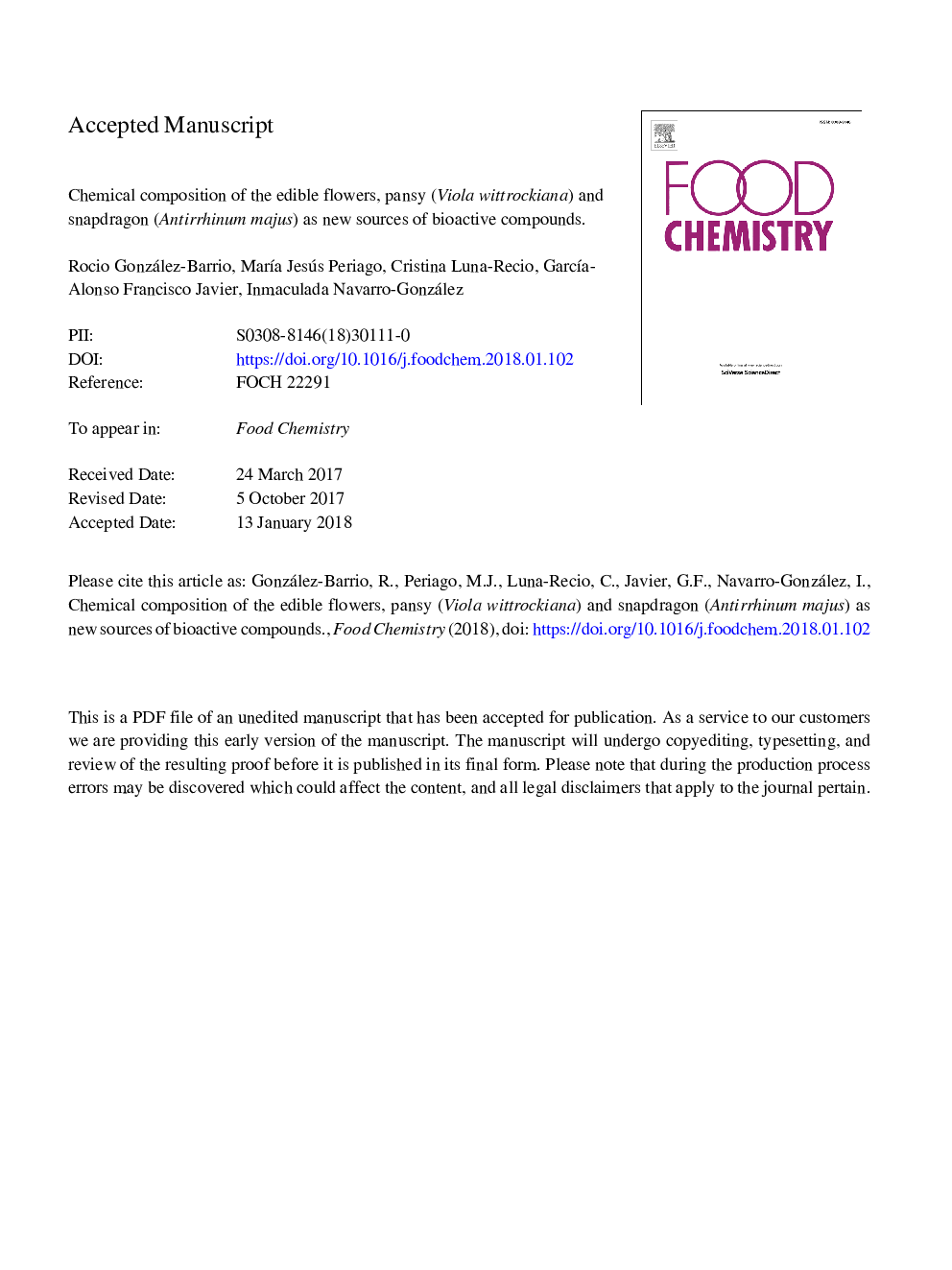| Article ID | Journal | Published Year | Pages | File Type |
|---|---|---|---|---|
| 7585776 | Food Chemistry | 2018 | 35 Pages |
Abstract
The nutritional composition - including total and individual phenolic compounds, carotenoids, and the antioxidant capacity - of two commercially available edible flowers, pansy and snapdragon, was studied. The edible flowers did not differ in their carbohydrates, fat, or ash contents, or in total energy, but pansy had higher values of moisture, protein, and total dietary fiber than snapdragon. Phenolic compounds were more abundant in pansy than in snapdragon, and flavonoids were the major compounds, followed by anthocyanins. The phenolic profile of pansy included flavonols, such as quercetin and isorhamnetin glycosides, flavones, such as apigenin glycosides, and anthocyanins, such as cyanidin and delphinidin glycosides; in snapdragon it included flavonol glycosides (e.g. quercetin and kaempferol glycosides) and anthocyanins, such as cyanidin and pelargonidin glycosides. The contents of total carotenoids were 146 and 29â¯Âµg/mg for pansy and snapdragon, respectively, and lutein was the dominant compound.
Related Topics
Physical Sciences and Engineering
Chemistry
Analytical Chemistry
Authors
Rocio González-Barrio, MarÃa Jesús Periago, Cristina Luna-Recio, Garcia-Alonso Francisco Javier, Inmaculada Navarro-González,
